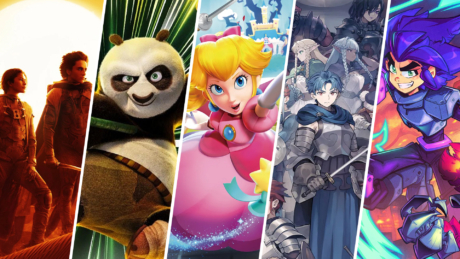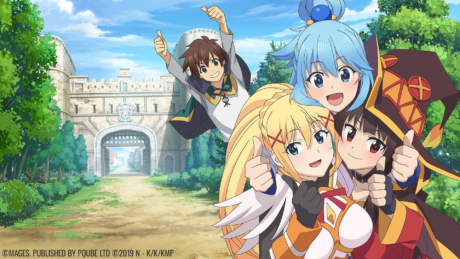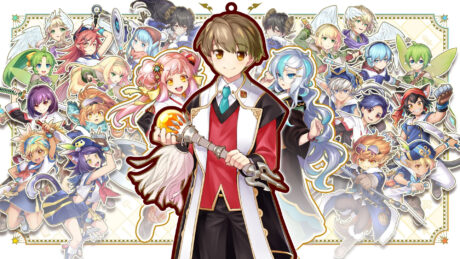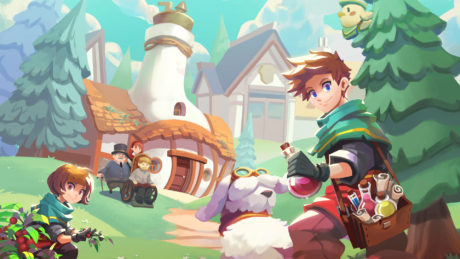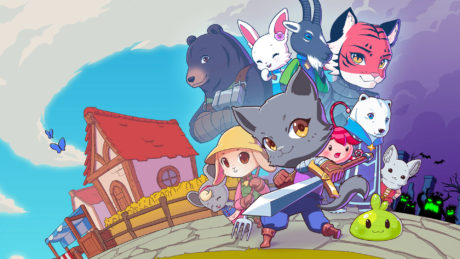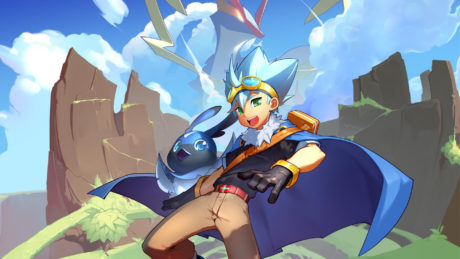Purrr....
- Story
- Worldbuilding
- Color-coded text
- Voice acting
Hisss!
- Protagonist is annoying at times
- Infodump conversations
- Few interactive choices available
- Special text characters don’t display
- Weird visual glitch in Episode 7
Platform
VitaPublisher
PQubeDeveloper
âgeSeries
Muv-LuvGenre
Adventure, Visual NovelPlayers
1File Size (Minimum)
3.23 GBRelease Date (NA)
Jun 12, 2018Purchase From
Developed by âge, Muv-Luv Alternative is the third title in a trilogy of visual novels which began with Muv-Luv Extra and Muv-Luv Unlimited. These games were originally released in Japan for the PC and subsequently ported to the PlayStation 3, Xbox 360, and PlayStation Vita. After a successful Kickstarter campaign to release them all in the west, they are now available for us English speakers on the PC and PlayStation Vita. While playing the first two games is not necessary to enjoy the third since the latter’s narrative is mostly self-contained, doing so allows for a much richer experience. However you decide to play, Alternative offers a lengthy, thoughtful, and sometimes brutal science fiction tale of parallel worlds that you won’t soon forget.
War of the Worlds
The story begins the morning of October 22, 2001, when Takeru Shirogane wakes up in his room after having a crazy dream where he and his high school friends and teachers were all soldiers in a version of earth invaded by an aggressive alien species known as the BETA. When he leaves his house, however, he finds the town around him in ruins and a military base located where his school should be. Understandably confused, he goes to the base in search of answers, but when he comes across the guards at the gate, he gets an incredible sense of déjà vu and makes a decision based on that feeling.
When he eventually meets with his instructor and base bigwig, Yuuko Kouzuki, he begins to realize that what he thought was just a dream was, in fact, real. (He experienced it all in Unlimited). Unfortunately, that also means the ending to his dream was also true: earth is doomed at the end of the year if he and Yuuko-sensei cannot stop it. From there on, Takeru uses his memories and his wits to fight against time to save everyone from his grimly prophesied future.
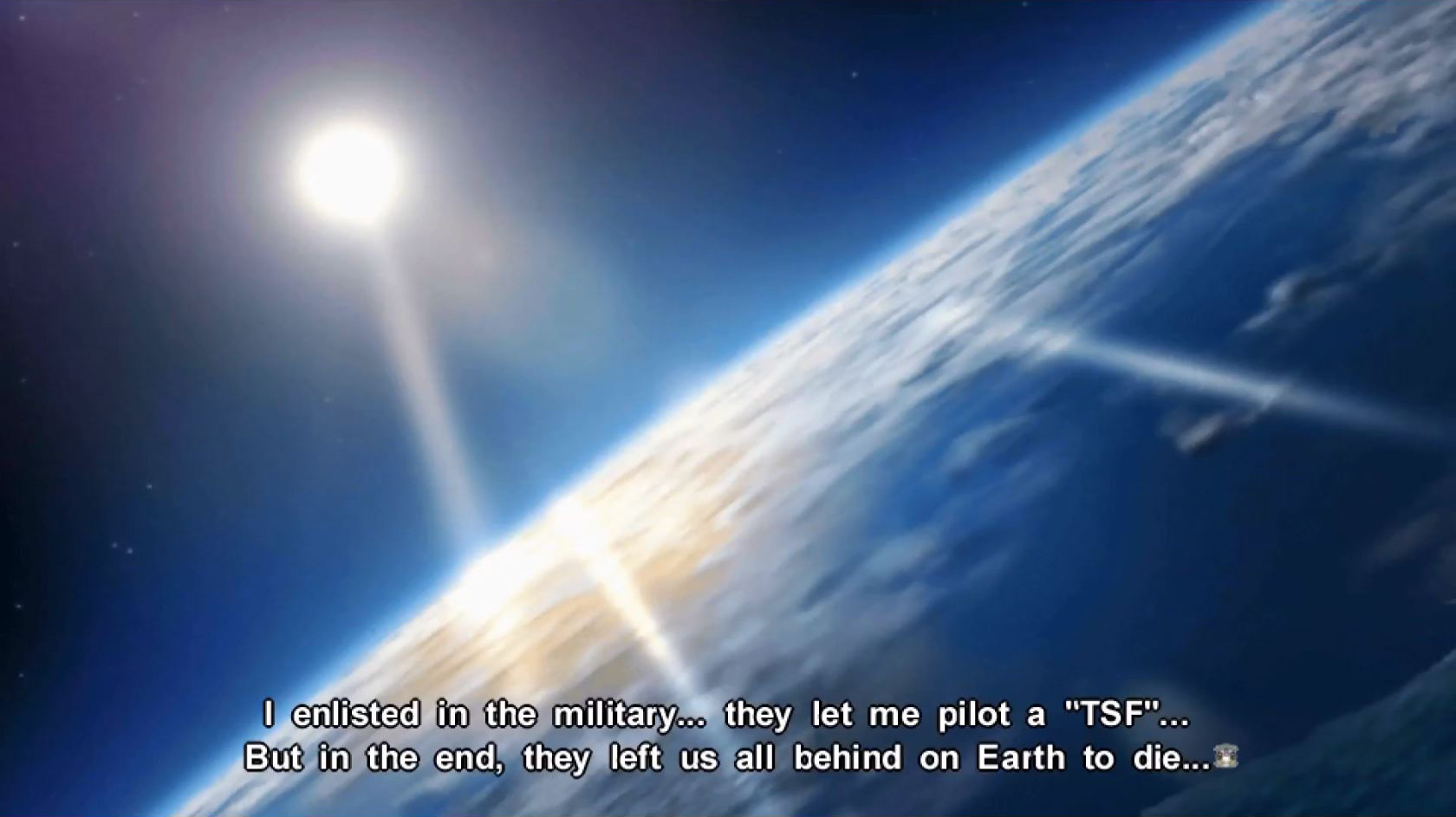
And We Are All Together
Helping Takeru are his squadmates from Unlimited (and friends in Extra): the honorable and beautiful Meiya Mitsurugi, the glasses-wearing “Class Rep” Chizuru Sakaki, the sardonic Kei Ayamine, the childish Miki Tamase, and the inexplicably genderbent Mikoto Yoroi. Also assisting him are Marimo Jinguuji as their military instructor, Yuuko-sensei’s reticent assistant, Kasumi, and even a few cameo characters from another of âge’s series, Kimi ga Nozomu Eien (Rumbling Hearts in the States). Sumika Kagami, Takeru’s childhood friend from Extra, is still missing, but the game does resolve the question of what happened to her.

Over the course of the 40-plus hours it takes to finish the story, you get to know these characters really well. Some of them were introduced as mere archetypes in the light-hearted Extra, but in Alternative, you see them struggle and grow into more well-rounded people as they understand their true motivations and overcome the many grueling situations they encounter. That said, some of their character arcs end too quickly or were completed in a previous title, so a few characters do end up sitting around until the story needs them to do something.
Of course, as the main protagonist, Takeru himself undergoes the most change. Yes, his single-minded focus to save humanity is commendable, but he is also a deeply flawed human being beyond that, which is fantastic. He learns many of his lessons the hard way, and while it is often painful to see him undergo these experiences, it makes him a more compelling individual… for the most part. His teenage naivete can be grating at times. I’ve literally facepalmed at his stupidity over a dozen times, and his trademark utterance of “Huh?” really gets tiresome after the thousandth time. Then again, the situation in which he finds himself is quite complex, so his endless confusion is understandable.

War and Peace and More
Alternative’s story is more than just a simple tale of mankind fighting off an alien invasion; it’s a sprawling narrative that delves deeply into parallel worlds and causality, with a hearty helping of political intrigue thrown in to boot. It’s certainly heady stuff, but the game does a great job of explaining it all. Between the countless conversations with Yuuko-sensei to a few actual in-game classes, the worldbuilding done in the game is extensive. Ever wanted to know the number of arms the game’s giant mecha have? What about the current socio-political climate? They’ll be sure to tell you. It’s clear that a ton of work went into its creation, but even though it’s neat that they thought about even the smallest details that can make the experience more immersive, they didn’t really need to include every little part of it in the story. More than a few conversations come across as being little more than info dumps and could have been left out, which would have helped quicken the pace in a story that currently takes a minimum of 40 hours to finish.

On the other hand, what doesn’t need editing are the game’s more visceral concepts. As a war story, violence is naturally present, but it isn’t glorified. Battles are not so much heroic as they are an unrelenting war of attrition. The average lifespan of a new soldier on these battlefields is only eight seconds, roughly the amount of time it took to read this paragraph up to this sentence, but the worst instance of violence in the game is the one you never see coming. It’s chilling but effective with reverberations that last throughout the remainder of the game.
The title doesn’t shy away from sexual content either. Granted, it must be noted that while the Muv-Luv series were originally erotic games which show sex scenes as a reward, those unnecessary elements have long since been removed. The scenes of partial nudity and other sexual situations that remain, however, are relevant to characterization and to the plot itself, which is as it should be.
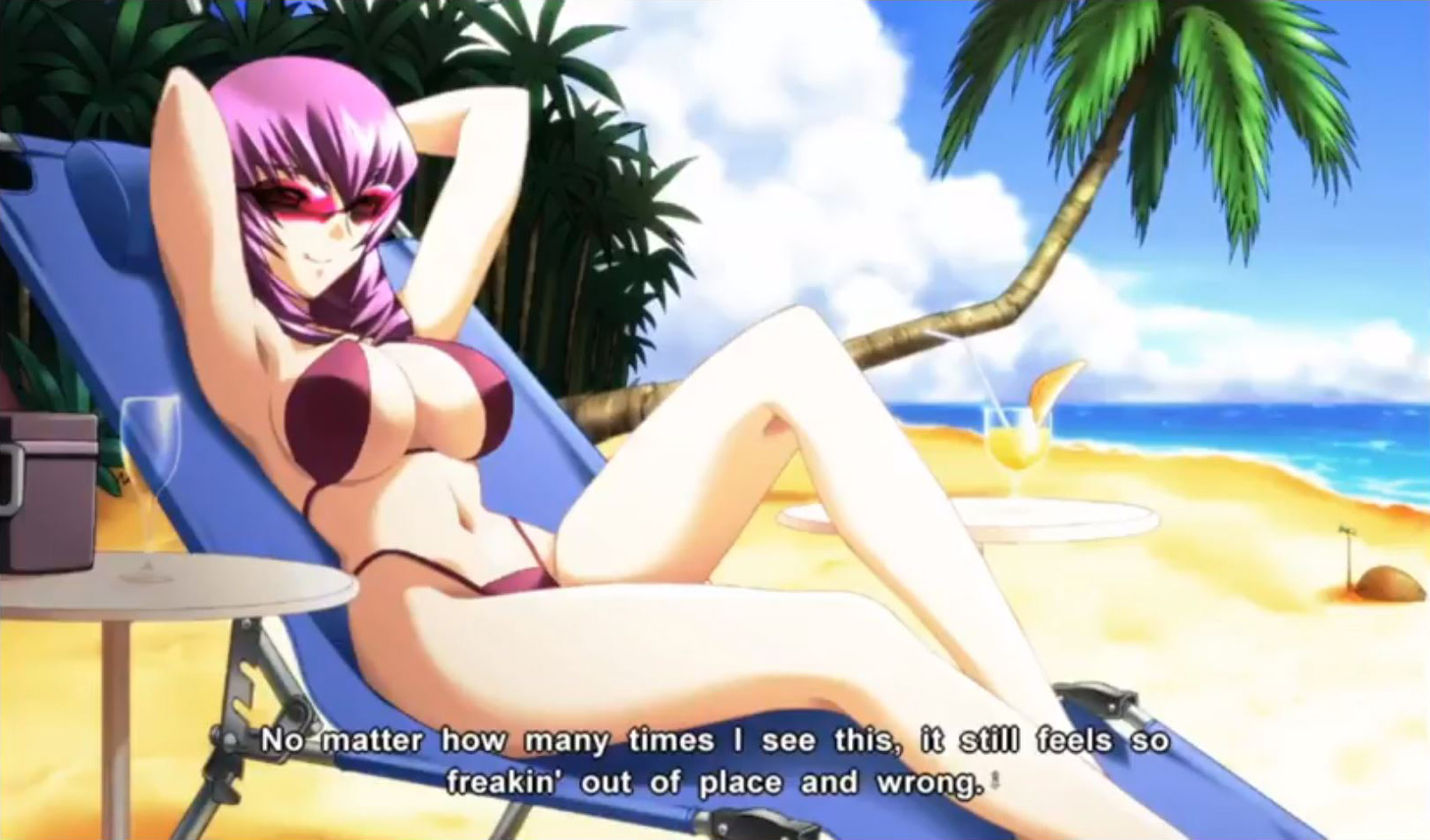
Basically, Alternative is the type of complex and compelling story that is ready-made for a television adaptation. You’re already playing through a full 26-episode anime series as it is, so it could be done with a little bit of tweaking. Plus, the actual “playing” part is barely even there in the first place.
When Is a Game Not a Game?
The Merriam-Webster dictionary defines a game as an “activity engaged in for diversion or amusement,” and Alternative barely meets those standards. Like its predecessors, you do interact with the game by selecting a response or course of action from a predetermined list of options, but you only do so about a dozen times across 40 hours. Plus, some of the choices aren’t really choices at all. Sure, the text may be a little different if you decide to talk to a character versus pushing her away, but the main plot points stay essentially the same, ultimately resulting in a linear and passive experience. Heck, you even earn trophies for doing nothing but finishing each chapter, which feels a lot like receiving one of those pointless participation prizes. If anything, they should give you a trophy for pressing the X button a hundred thousand times since that’s what you’ll be doing.
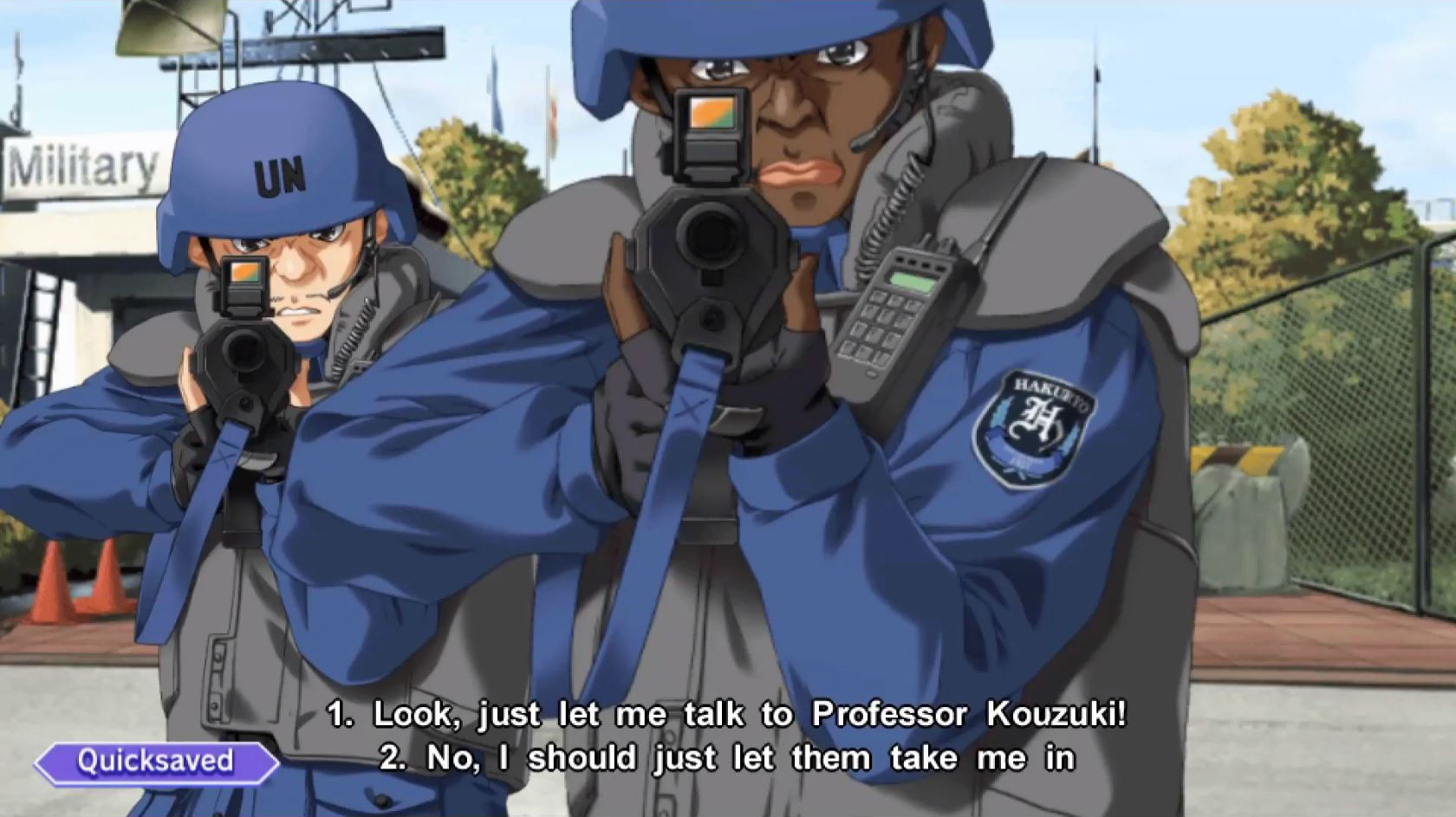
The controls are quite simple since the actual “game” elements are minimal at best. You press one button to advance the text forward one line, another button to bring up the main menu, and another one to bring up a dialogue history from that play session. Other buttons switch between English and Japanese subtitles (or none) and fast-forward through scenes. Even the touch screen is used to mimic some of these button presses. However, make sure you don’t accidentally fast-forward a scene when you mean to open a menu instead.
A Word, If You Please
According to the Kickstarter project page, a team of professional and fan translators worked directly with the game’s original creators in order to release the Muv-Luv games in the west, and their work is well done. The game throws a lot of jargon and high concept ideas at you, but they are conveyed clearly. Similarly, characters are well-written with distinctive voices that come through clearly.
Aside from that, a couple lines do stand out in particular. The popular catchphrase “And… boom goes the dynamite” is used for a scene involving explosives. On the other hand, “Perfect-a-mundo” is a slang term this writer hasn’t seen or heard used in well over a decade. Of course, this fits perfectly with the fact that the game takes places in late 2001.
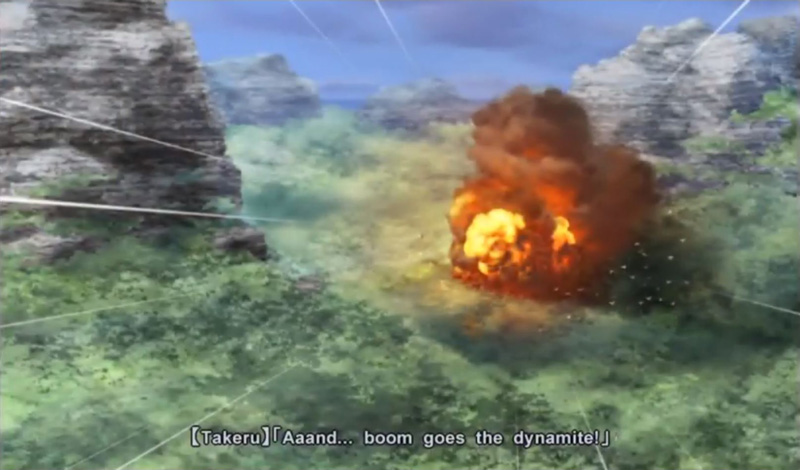
The translation does have a couple minor issues, though. The biggest one being that special characters like accented letters and long dashes are missing completely, resulting in phrases that look like run-on sentences and words like “touché,” “fiancé,” and “clichéd” appearing as “touch,” “fianc,” and “clichd.” It’s possible that this is more of a technical issue than an actual translation error, but either way, it’s distracting. Aside from that, a genuine misspelling was noticed in Episode 9 where it said “must” instead of “most,” but considering the sheer volume of text involved in the project, this is the nitpickiest of nitpicks.
Would You Look at That
The visuals in this visual novel are quite varied. You’ll see everything from Flash-animation-style alien attacks and cartoonish mini-characters to alien tunnels rendered in barebones 3D and beautiful still images. It’s a real mash-up of graphical styles and techniques, especially when it comes to making the action scenes appear more dynamic, and just when you think you’ve seen them all, they throw in a fully animated, hand-drawn cutscene of a rocket launch just to mess with you. It definitely keeps the experience from getting boring.
In general, though, like most visual novels, most of your time will be spent looking at minimally animated 2D characters against a 2D background. The characters do change poses pretty regularly to emphasize what they’re saying or thinking, which helps when scenes can last anywhere from a few minutes to half an hour, and the small touches like blinking eyes or cold breaths are subtle but welcome.

The flat backgrounds behind them are highly detailed whether it’s Yuuko-sensei’s office, a mech hanger, or a busy command center. There is even animated snow in one story arc, adding to the immersion. Still images also appear periodically to punctuate key moments, and they are wonderfully rendered. Moreover, as a bonus, when you finish the game, you unlock a gallery that allows you to view almost all of them at your leisure, which is great because one of Kei’s last pictures is the absolute height of awesome.
However, there are some blemishes here and there. When the camera is zoomed in close to a person’s face, the background behind them is blurry because the artists didn’t redraw it at a higher resolution. Also, the “surprised” expression on some of your squadmates just doesn’t look right. Chizuru, for example, instead of appearing in disbelief at a tasteless joke, comes across looking like she saw you murder a child. Finally, in two or three cutscenes, the still images that flash by do so a little too quickly. Maybe that’s the point, but I still would’ve liked to have seen them for at least half a second. Overall, though, these instances are few and far between and don’t detract from the experience.

On the other hand, a weird graphical issue does crop up in Episode 7. In some of the scenes at school, the character graphics start disappearing randomly during regular conversation and don’t re-appear until you restart the Vita. However, it’s not a permanent solution. It’s really unusual and the problems are limited to that section, so part of me wonders if it was intentional. Even so, it’s not well-handled.
Speaking of the characters, they are mostly well-designed with your standard color-coded hair and exaggerated hairstyles. Miki’s pink hair is impossibly ridiculous, though; it’s so angular she could poke somebody’s eye out and so wide that it’s a wonder she’s able to go or do anything without it hitting something. Everyone else is pretty normal in comparison, but a couple girls do need to ease up on the starch for their hair ribbons. Also, in a smart bit of interface design, the subtitles associated with each character are colored similar to their hair. The text already begins with the name of the person speaking, but the added color is a great way to quickly identify who is speaking in large group conversations. Clever.
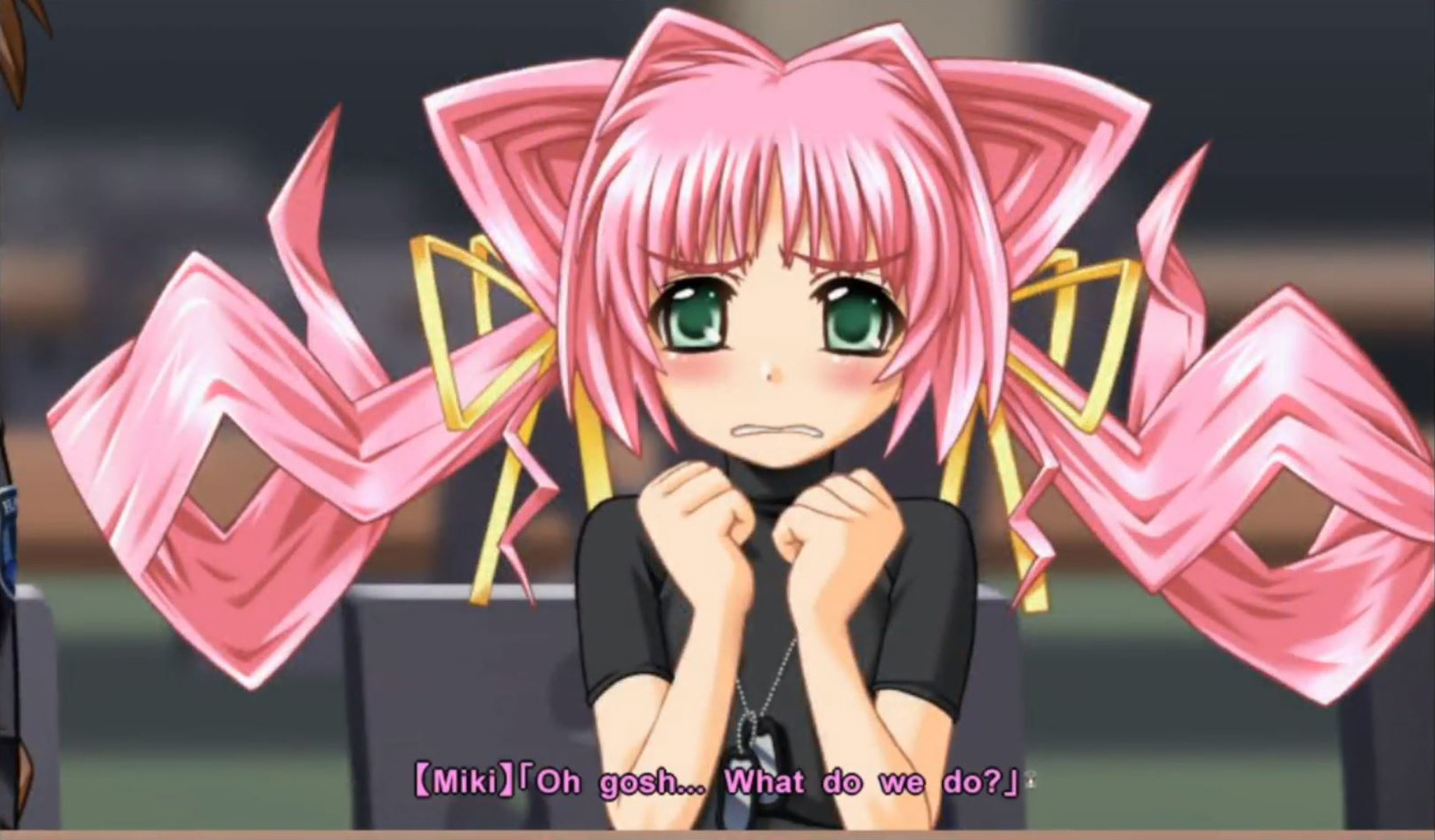
Whispers in the Ear
It almost goes without saying that the game is almost entirely voiced in Japanese. From the major characters to the unnamed minor ones, everyone gets heard, and the acting for each one is spot-on. Even in the lines that are literally nothing but an ellipsis, which appear far more often than I would like, the cast emotes meaningfully. There’s also a handful of spoken English that’s limited to one short scene in the entire game, and it sounds completely authentic — not like that “Engrish” that you hear in anime sometimes. Great job!
That said, the mixing could have used a little more work in a few of the later command center scenes. The default background noise is too loud, matching the chaos going on in the story, but it is almost impossible to hear what the characters are saying, which unfortunately breaks the suspension of disbelief. Thankfully, you have the option to adjust the sound settings in the menu, but this is a small oversight.
Like the voice acting, the music is handled quite well. Despite the fact that you will hear the same handful of tracks looping endlessly for hours at a time, it never becomes bothersome. It’s not as if the compositions are especially memorable or anything–they’re decent enough–it’s more of the fact that they’re unintrusive, even as they enhance the scene going on. Plus, there’s just enough variation across the different songs to keep things interesting. For example, the songs playing for many of the casual conversation scenes are pleasant and unassuming, making use of their simplistic MIDI-sounding instrumentation, whereas the dramatic scenes mostly have more realistic sounding instruments. The creators make good use of silence, too, like when Takeru is walking down a long hallway. These moments force you to focus on what’s really going on with the character in question, and that’s just good direction, period.
Wow, Just Wow
I have a confession to make. Prior to starting Muv-Luv Alternative, I had never played a visual novel before, but I am glad that it was my first. The experience was long, thought-provoking, shocking, and completely engaging, and although I will play many more visual novels after this, I will never forget the journey of Takeru Shirogane and his friends. The PlayStation Vita itself may be on its way out, but it will never die in the hearts of many thanks to high quality titles like this one. Got it? Perfect-a-mundo.
Disclaimer: A digital review copy was provided by PQUBE Limited.

